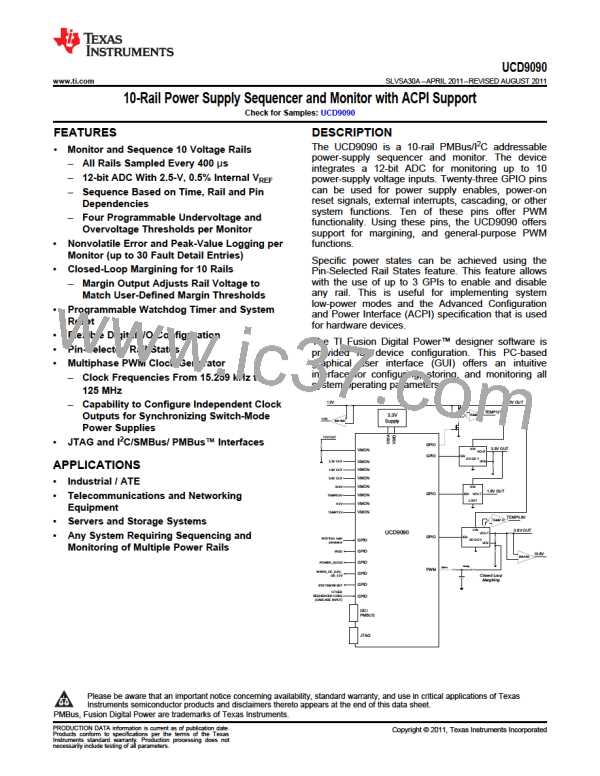UCD9090
www.ti.com
SLVSA30A –APRIL 2011–REVISED AUGUST 2011
UCD9090
TMP20
MONx
VOUT
AVSS1
GND
V+
3.3V
Vout = -11.67mV/°C x T + 1.8583
at -40°C < T < 85°C
Figure 12. Remote Temperature Monitoring Circuit Example using the TMP20
TEPERATURE BY HOST INPUT
If the host system has the option of not using the temperature-sensing capability of the UCD9090, it can still
provide the desired temperature to the UCD9090 through PMBus. The host may have temperature
measurements available through I2C or SPI interfaced temperature sensors. The UCD9090 would use the
temperature given by the host in place of an external temperature measurement for a given rail. The temperature
provided by the host would still be used for detecting overtemperature warnings or faults, logging peak
temperatures, input to Boolean logic-builder functions, and feedback for the fan-control algorithms. To write a
temperature associated with a rail, the PMBus command used is the READ_TEMPERATURE_2 command. If the
host writes that command, the value written will be used as the temperature until another value is written. This is
true whether a monitor pin was assigned to the temperature or not. When there is a monitor pin associated with
the temperature, once READ_TEMPERATURE_2 is written, the monitor pin is not used again until the part is
reset. When there is not a monitor pin associated with the temperature, the internal temperature sensor is used
for the temperature until the READ_TEMPERATURE_2 command is written.
UCD9090
Faults and
Warnings
I2C
I2C or SPI
REMOTE
TEMP
SENSOR
Logged Peak
Temperatures
READ_TEMPERATURE_2
HOST
Boolean Logic
Figure 13. Temperature Provided by Host
Copyright © 2011, Texas Instruments Incorporated
19

 TI [ TEXAS INSTRUMENTS ]
TI [ TEXAS INSTRUMENTS ]